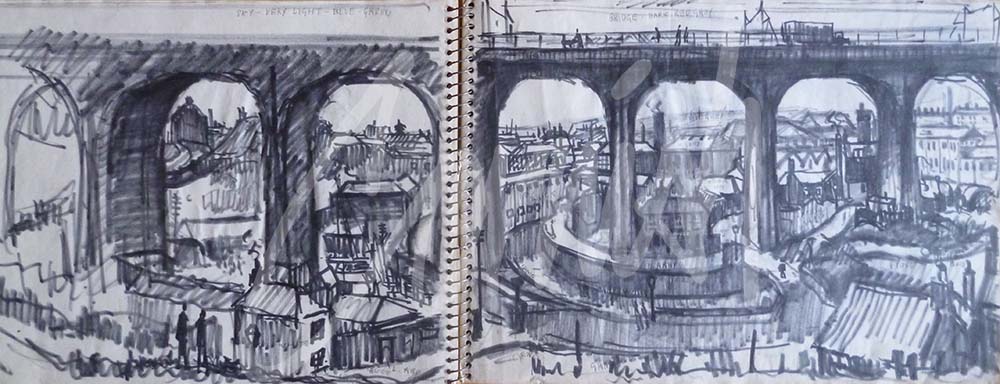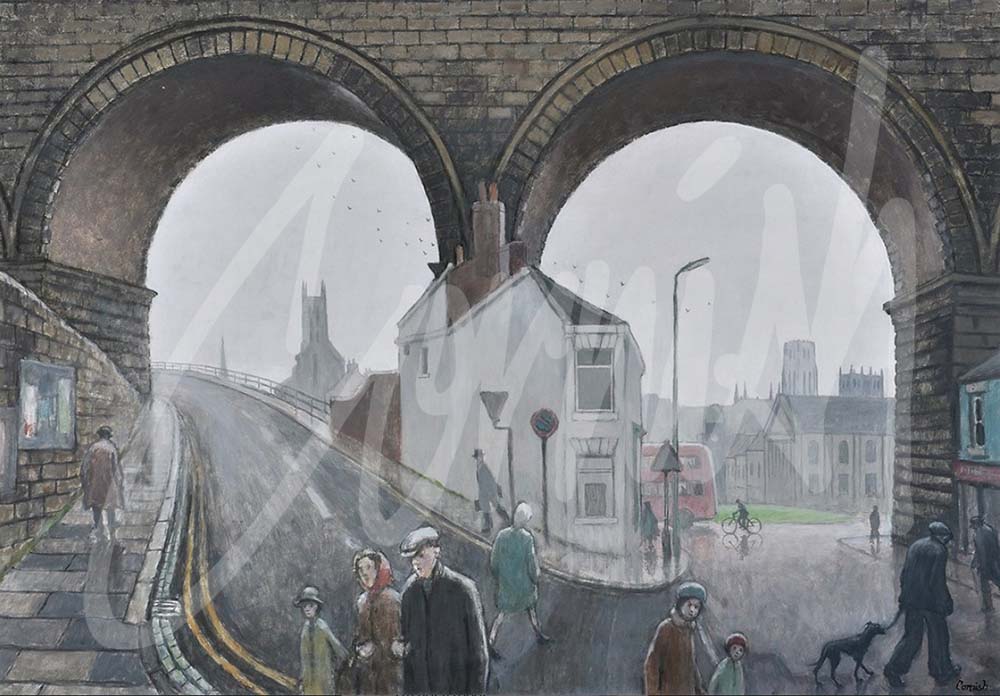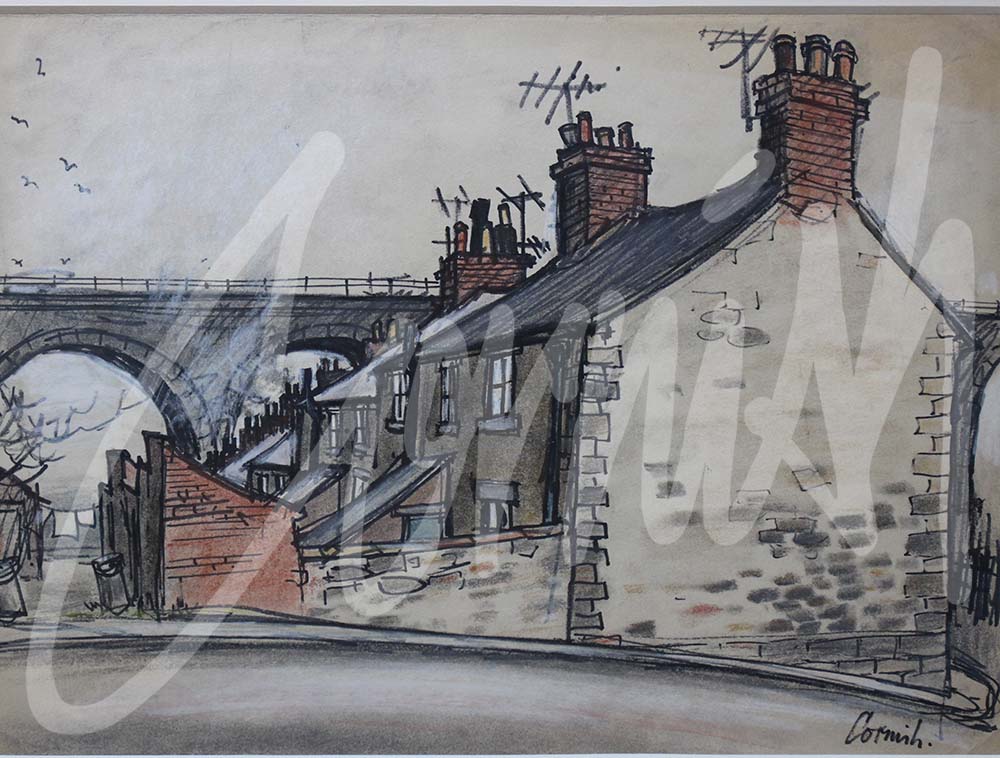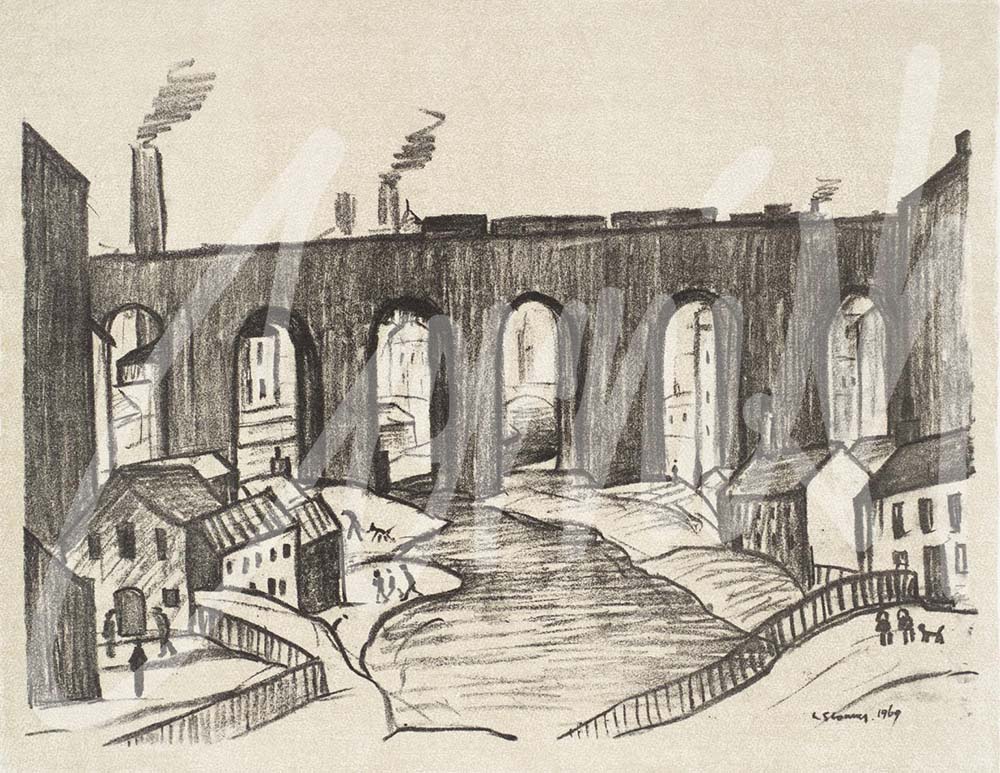
Latest News

Viaducts
The development of the first steam railways from 1825 inevitably inspired some construction and engineering solutions to overcome the physical barriers to the growth of the rail network. A plethora of viaducts connecting rail tracks in challenging environments soon became prominent features throughout the country. Many have stood the test of time and continue to be fully operational as well as acquiring high status, such as the Glen Finnan viaduct featured in one of the Harry Potter films. The Ribblehead viaduct is another spectacular feature which attracts rail enthusiasts on the Carlisle to Settle line.
Viaducts have also attracted the attention of many artists over the years for a variety of reasons, such as their architectural beauty or simply their fascinating shapes. L.S. Lowry was noted for his interest in the Stockport viaduct (Edgeley viaduct) which carries the West Coast Main Line across the valley of the River Mersey in Stockport, Greater Manchester. This particular feature was originally known as one of the largest brick structures in the UK when constructed in 1840.
The North East of England was also well endowed with viaducts on the line from Berwick- upon - Tweed through to Durham and on to Croxdale, and Newton Cap (Bishop Auckland) to name but a few of the total number of 171 viaducts designed to cross rivers and overcome undulating physical features.
Norman Cornish and Sid Chaplin were workmates at the Dean and Chapter Colliery, Ferryhill for many years. They were also members of The Spennymoor Settlement, that cradle of creativity which enabled local people to develop their talents during a time of cultural despair. Cornish often travelled to Newcastle to spend some time at The Stone Gallery and he would occasionally arrange to ‘meet up’ with Sid Chaplin who was writing in his novels about the things that Cornish was drawing. Tyneside also provided much inspiration in terms of new subjects to draw and one day Sid accompanied Cornish for a walk through the Byker area of Tyneside. Sid had featured the area in two of his novels published in the early 70s: ‘The Day of the Sardine’ and ‘The Watchers and the Watched.’
“ I remember showing Norman Byker Bridge. He made a drawing, then shook his head. ‘It’s all Lowry.’ The drawing was sterile – not because it was Lowry’s subject – but because it straddled another world, and to re-create the bridge he must know the people who use it or live around it.” Sid Chaplin
This remarkable drawing is featured today. Just consider for a moment the challenge for Cornish of holding a double- page sketchbook on one hand/forearm, and quickly using his favourite Flo-master pen to record the Byker Bridge viaduct without any errors! The drawing was only discovered when family members catalogued the 269 sketchbooks belonging to Cornish during one week in August 2012. Unusual viewpoints of the Durham viaduct and Newton Cap (Bishop Auckland) are also included and they also feature in ‘Behind The Scenes: The Norman Cornish Sketchbooks.’ Sadly, the drawing of the Byker Bridge was never developed into a painting although the Byker district of Newcastle became the setting (1989-2006) for the CBBC teen drama ‘Byker Grove.’





